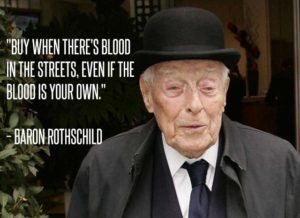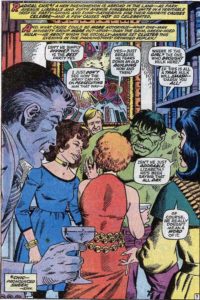* The riots pretty much heralded the end of the lockdown so they presume asset prices and stocks went as low as they were going to and are buying back the dip.
* Most wealthy people I know have decided that the Covid 19 plague has ended. The theory goes that people learned how not to get it or hardened at risk populations against the virus. I will just say I know some very wealthy people who are betting it all on the country being more or less back to normal within a few weeks.
* 1) Companies are going to be more work-from-home for their white collar staff. Not exclusively, of course, but you’ll get people WFH 3-4 days a week. This will enable companies to reduce the amounts they spend on office space, although this is years down the roads. Office space is usually a multi-year lease, and companies need to get better at figuring out how to support people at home when their PC speakers don’t work or whatever, and will also want to track their workers’ more on their PCs at home. But companies will be able to get rid of a lot of the excess cost, and will probably be able to operate with fewer employees as well.
2) There’s going to be less business travel. People realize you don’t really need to jump on a plane, go to a business meeting, and then stay a night, and fly back home. A zoom meeting is basically free. This applies to internal meetings and meetings with customers / potential customers. There’ll still be some of this, of course, but I think companies are seeing it’s not always necessary. This will help companies save more money. These savings will continue to be realized because few people are going to want to fly 2-3 hours in a metal tube before there’s a cure for the virus. Industry conferences will probably eventually make a comeback though, so people can all network in one place.
3) There’s going to be a mass exodus from the cities among the professional class. Backyards, baby. Particularly if people don’t have to commute more than 1-2 days a week and can work from home the rest of the time. Restaurants in downtown Philly, Chicago, NYC, Atlanta, and so on are going to have a hard time.
* Also has anyone looked into if the per capita death rate might also be correlated with the percentage of poorly paid and motivated foreign staff in nursing homes. In my experience the people who own and operate nursing homes tend to be spivs.
* Small businesses don’t issue stock. The rioting destroyed mainly small businesses. Rioting in cities doesn’t affect the stock market because with the small businesses gone, the big national chains that have issued stock can now get the customers that used to patronize those small businesses. Riots are an overall gain for big national chains.
Secondly, riots are old hat to the stock market. The stock market knows how to trade a riot. Investors were waiting to see how much damage the pandemic was going to cause, and now they have an idea where to put their money.
* The Fed has created a completely artificial market by 1) imposing a zero-interest rate (or near-zero) policy since 2009, which means you can’t make any interest by putting your money in the bank, so you’re incentivized to put it into equities, and 2) Congress has artificially incentivized people to put their money in the market by creating deferrals in the tax code such as Roths and 401(k)s.
* 1. The economic fundamentals remain strong. Corona was just a short term event.
2. Had governments not replied properly with lots of liquidity, this could have led to a longer term economic downturn. But the liquidity will help to bridge the pause in the economy caused by Corona.
3. There will be disruption to the economy, but only certain segments. You might even be able to credibly argue that the disruption will result in a more efficient distribution of capital, which would help the economy and equity markets. For example, retailers like JC Penney were doomed, it was just a matter of when. Corona could be the nail in the coffin that accelerates the growth of companies like Amazon, etc.
* There’s only 3,500 public traded companies in the US (20 years ago it was 7000). These 3500 companies don’t reflect the majority of employment of labor in the United States.
If anything, the trend towards digitization (e-commerce, work from home, data analysis on the cloud, etc) is accelerating the trend toward big companies becoming more efficient and profitable.
The covid analysis accelerated this trend by 5-10 years than it would’ve happend. No way could a CEO or CFO have told his employees to test out working from home. Now that the cat is out of bag, all the trends benefit large companies. The only ones that have suffered are travel, leisure, entertainment companies but they are now getting better (a little too fast, maybe will fall back down);
The end result is that the large public corporations, especially technology, medical tech, healthcare, and to a degree industrial companies are not dependent on the low wage workforce that works in the mom and pop stores all over america. This includes a significant black and Latino and white population. Could be 50-70% of the US population…
* The destruction from the black rioting has been relatively minor in the grand scheme of things, it hasn’t affected production or distribution of goods and services on the US and the cost is orders of magnitude below the Corona stimulus.
* Sanctuary cities created housing shortages. I know of one guy in particular who owns, last I checked, 10 rental properties. He only rents to illegals. He charges lower than market rents, and allows as many tenants per unit as the tenants can stuff into them, should they choose. In return, they don’t ask for repairs. It’s agreed upon that they will fix anything that isn’t major themselves. They do the yard work. He visits all these properties once or twice a year. Totaled, he’s taking around 45 units off the general market by renting this way.
* “calling the police when your house is broken into comes from a place of privilege.”
Well, Wittgenstein would point out that she is technically correct: if you have stuff in your house that is valuable enough to be worth stealing (hence the burglary), then you have a pronounced value-differential relative to the thieves; hence your home, where the phone call is originating from, is literally a place of privilege.
Now you know why nobody ever made Wittgenstein the chief of police.
* We need to talk about the original sin of boomer cuckservatism: giving in to the civil rights movement.
As someone who of came of age around the time of 9/11 it was shocking for me to discover the “civil rights” movement was evil bullshit. Nobody on the right ever said that. Rush Limbaugh and Sean Hannity and anyone “conservative” at the WSJ or NYT loudly proclaimed how they loved MLK and how evil Southerners were for Jim Crow laws. Someone might say Pat Buchanan gave some pushback but I am too young for his ’92 campaign. By the time I was old enough to remember anyone “conservative” enough to offer even mild criticism of MLK had been banished to the fringes which I later did discover (obviously).
Evil? My mother grew up working class in the urban deep south. She was completely safe in her not rich neighborhood and got to attend 100% white schools. That’s not evil. That’s making the correct policies for your people.
The people who came to the South to dismantle our democratically erected institutions–including Jim Crow–are evil people who hate us and want us to suffer. It is outrageous I grew up around boomers who *saw this happen*–the destruction of Detroit, the Paris of the Midwest–and just shrugged their shoulders and said the “civil rights” people were right.
How on Earth could a soi-disant conservative literally see this happen and give in to these nasty thugs? When I was growing up Detroit was already gone. But boomer conservatives saw it happen! They saw the civil rights thugs were wrong. Proof by demonstration. Detroit was great and then it was awful. That’s the end of the argument. One might hypothesize that the civil rights thugs have a point but then we got the evidence: they were not.
So why did every Republican and conservative commentator I grew up act like this was all a good thing and we were the bad guys?
You can’t win an argument if you concede you’re wrong from the start. Why shouldn’t they keep putting the boot on our necks when we told them they were justified?
* Dating is tough in ‘Man Diego.’
Too many fit guys out at the clubs. Big male presence from the military too.
Ratios are horrendous. Too many dudes.
San Diego women look half as good as LA, but have twice the attitude.
As a guy, expect to date down.
Minneapolis has better ratios.
* Why has San Diego pretty much always been much nicer and safer than Los Angeles? Do the bad Mexicans skip SD and just head straight to LA?
* Tucker’s opening monologues have become night after night impressively brilliant and courageous.
* But I also must compliment Nancy Pelosi. Genuflecting on knees of her age is no mean feat!
* She needed help to get up. There’s video of it.
It’s also funny that the execrable Jerry Nadler didn’t kneel — the fat slob would never be able to — yet even standing he was about the same height as those kneeling.
The Dem party really is the party of freaks, degenerates and psychopaths.
* I’ve seen both Steve Bannon and Newt Gingrich acknowledge Pelosi’s skill and effectiveness as House Speaker.
She’s sort of intolerable to me to watch (as are many politicians), but apparently she’s still got her chops.
* I was skimming journalist Lara Logan’s Twitter feed and she is pretty much full on deplorable. Have her politics always been like this? Or did her assault in Egypt or something else red pill her?
* the blowhard do-nothing President can be re-elected
* The iSteve black-pillers love to describe Trump this way. Yes, Trump , with little support from his party and relentless, traitorous subversion from the opposition, has not done as much as we would like. At the same time, has actually accomplished a good deal that a conservative should like–you should be able to think of at least ten significant things. If can’t acknowledge that, I believe you just want to wallow in your black-pilledness.
* New York and Washington are both bad places for ordinary men to find women. Too much competition from Alpha Males in finance and government, respectively. Boston is supposedly a good choice, as all the academic institutions in the area attract many women.
For a woman looking for men, San Francisco is an excellent choice, but only if she’s willing to accept males (high tech types) who usually aren’t masculine but have a lot of money.
WILD: Attorney for MN Police Officer says unreleased body camera footage shows George Floyd saying “I can’t breathe” while he was inside the Squad Car
Attorney General Keith Ellison is refusing to release the body camera footage pic.twitter.com/hKj0TA7EjF
— american nationalist (@NationalistTV) June 9, 2020
#TuckerCarlsonIsARacist? really? how can anyone believe this guy is racist pic.twitter.com/vkthgGbtUa
— ☀️👀 (@zei_squirrel) June 9, 2020
I mean come on, you can't watch this and seriously think #TuckerCarlsonIsARacist pic.twitter.com/RkxqlxiwLg
— ☀️👀 (@zei_squirrel) June 9, 2020
I'm sorry, Chicago. You're screwed. This is your Mayor.
SOUND ON: Must listen leaked audio (language warning) pic.twitter.com/100bO09dLC
— TheSharpEdge (@TheSharpEdge1) June 9, 2020
While allowing massive protests in the streets, @NYCMayor Bill de Blasio selectively enforced "social distancing" and kicked Hasidic children out of a neighborhood park.
This is disgusting.pic.twitter.com/w6MMBa8pUi
— The First (@TheFirstonTV) June 9, 2020
New York police boss Mike O'Meara:
"Stop treating us like animals and thugs and start treating us with some respect … Our legislators abandoned us. The press is vilifying us. It's disgusting."pic.twitter.com/iI3eN0VVgO
— Daily Caller (@DailyCaller) June 9, 2020
#GeorgeFloyd’s niece: “Someone said, ‘Make America great again.’ But when has America ever been great?” pic.twitter.com/ZcD0m5LLc6
— Breaking911 (@Breaking911) June 9, 2020





